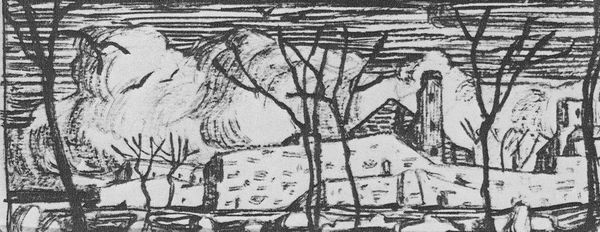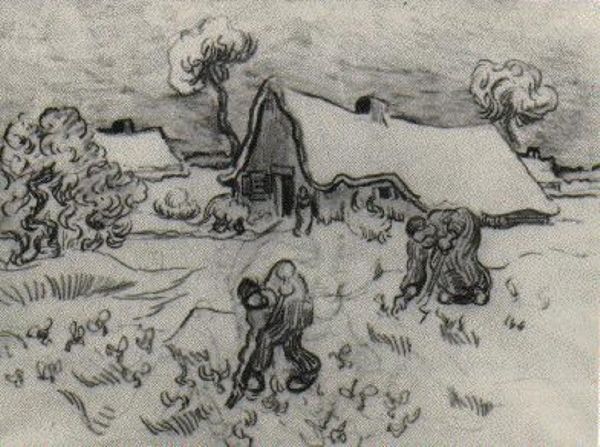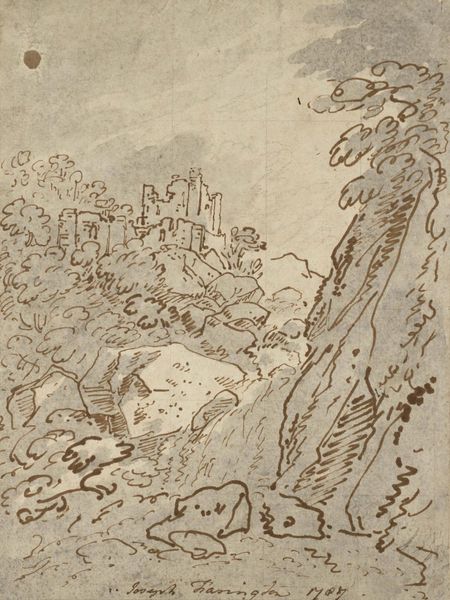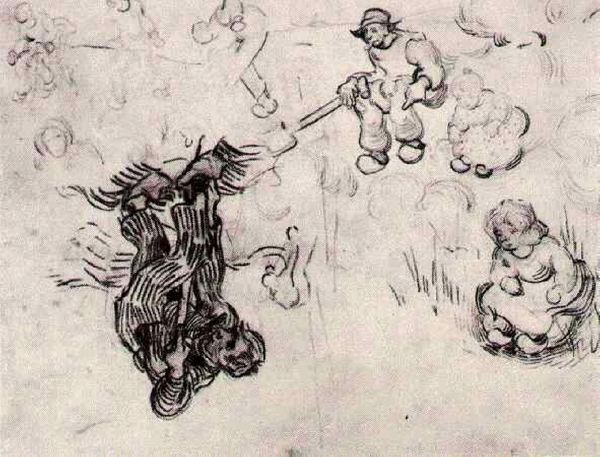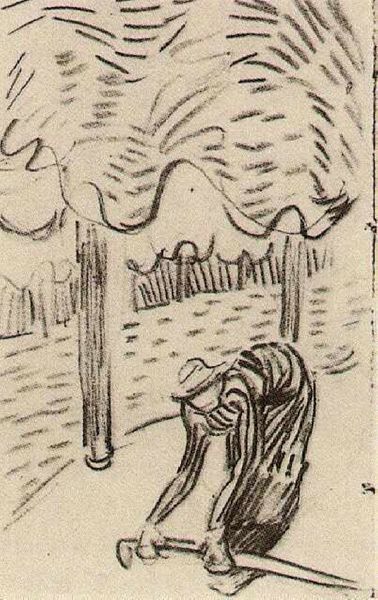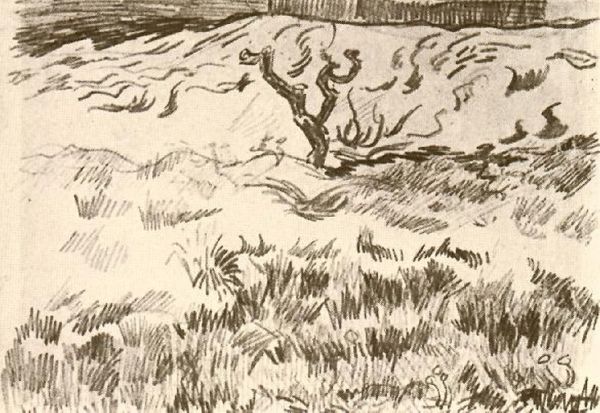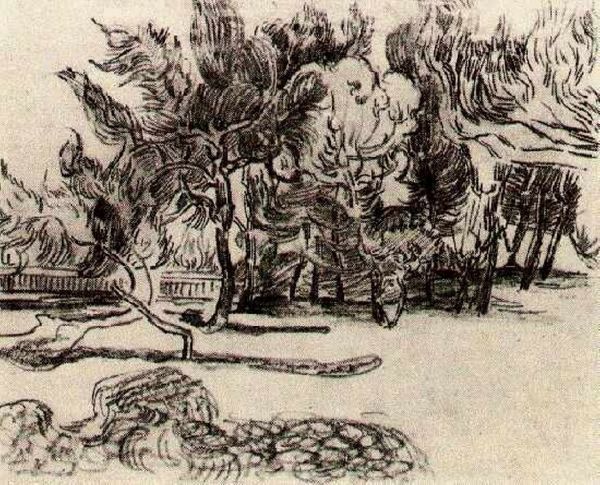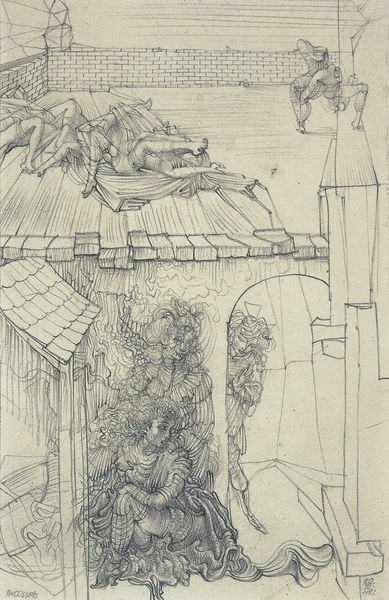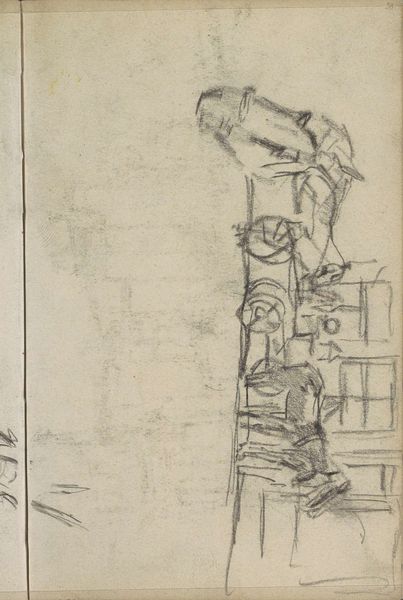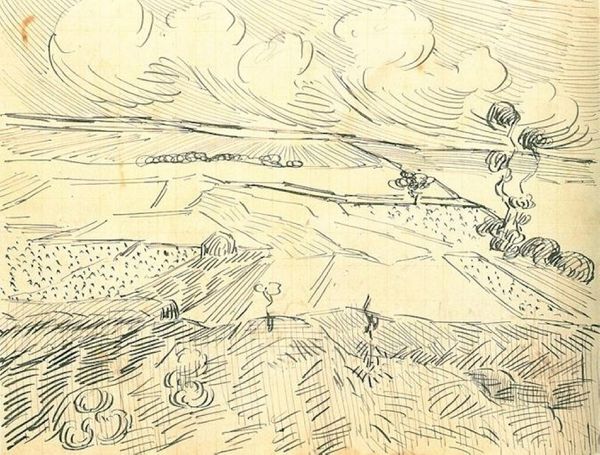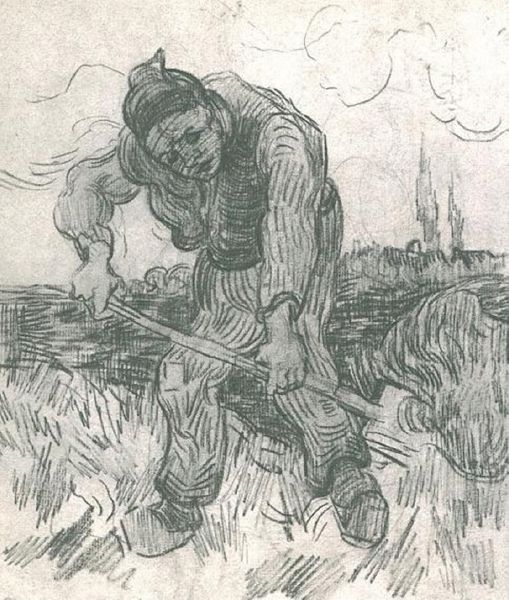
drawing, graphite, architecture
#
drawing
#
impressionism
#
landscape
#
graphite
#
architecture
Copyright: Public domain
Editor: This is Vincent van Gogh’s “A House at Auvers,” a graphite drawing from 1890. The monochromatic palette and somewhat distorted perspective create a slightly unsettling feeling. What underlying narratives do you see at play here? Curator: I think it’s critical to examine the drawing not just as a landscape, but through the lens of Van Gogh’s lived experience. Consider Auvers as his last refuge, a place he sought solace but which ultimately preceded his death. This drawing, made so close to that tragic moment, speaks to the artist’s complex relationship with belonging. How does the almost imposing size of the house and the surrounding foliage feel, knowing this context? Editor: I see what you mean. The house feels less like a safe haven and more like a looming presence. There’s almost an entrapment being implied. Curator: Precisely! Now, consider the figure in the foreground. Is it possible to interpret them as a representation of the marginalized in rural communities at the time? The drawing subtly directs our attention to those existing on the periphery. Editor: It almost feels like that lone figure symbolizes his own feelings of isolation. Do you think the drawing embodies some form of social commentary, reflecting on class structures within the small town? Curator: Absolutely! And isn’t that so much of what art is? Reflecting society and perhaps subtly advocating for those within it. The placement of the figure suggests exactly this--a silent, dignified challenge to the status quo. Editor: It’s amazing how knowing more about the background can influence your viewing experience! Curator: Exactly! It transforms a seemingly simple sketch into a poignant reflection on social identity, mental health, and the complex negotiation of space.
Comments
No comments
Be the first to comment and join the conversation on the ultimate creative platform.

